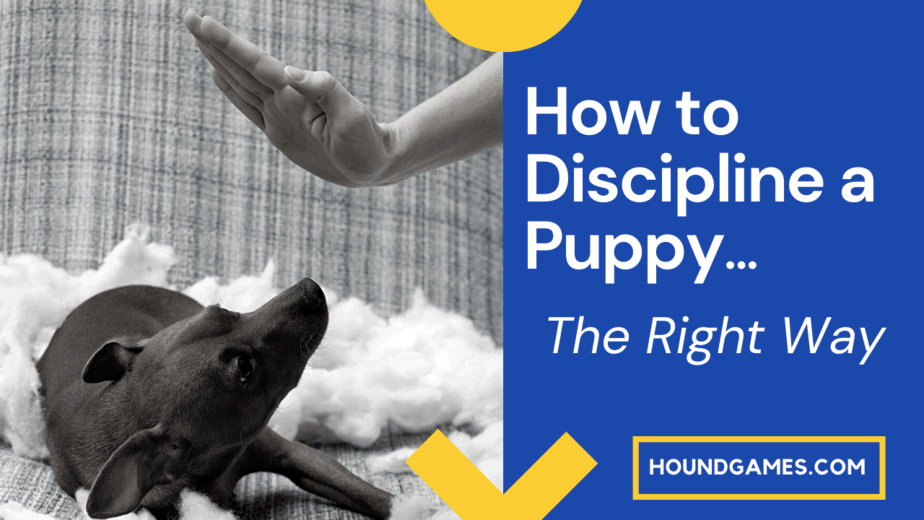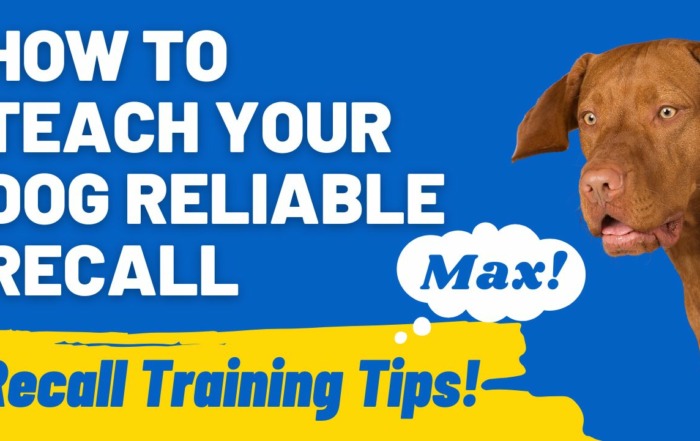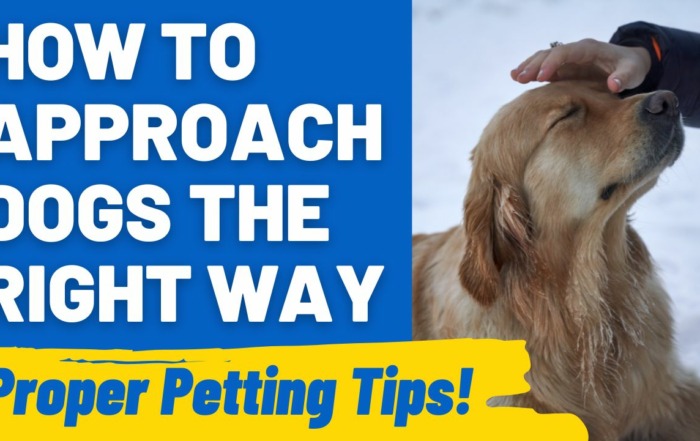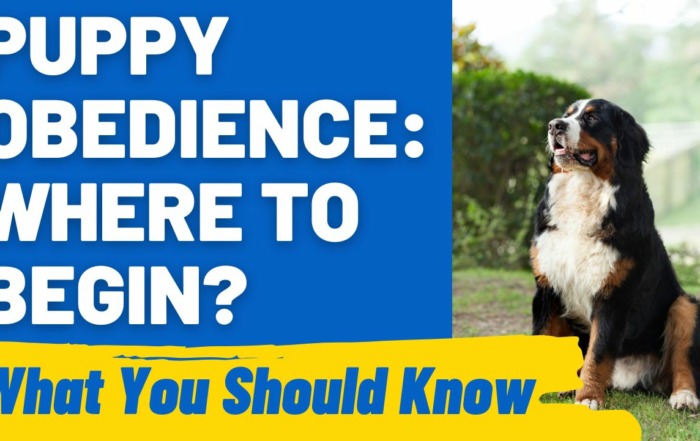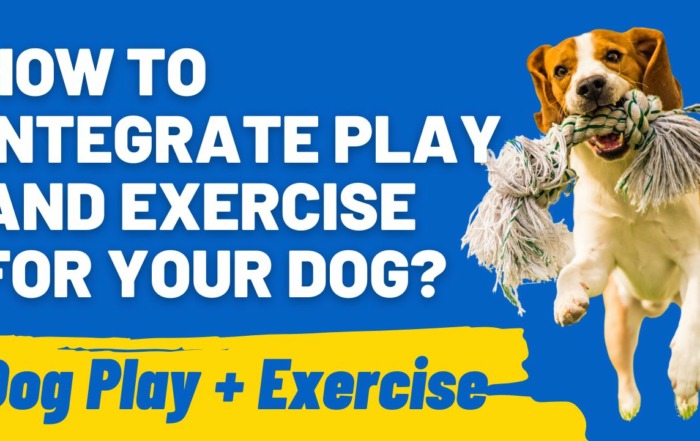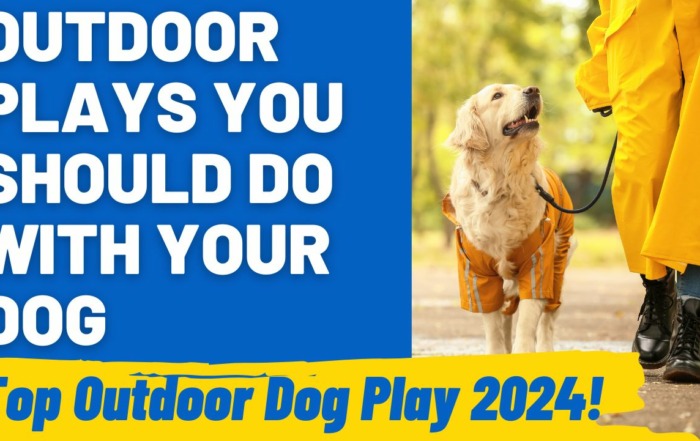Puppies are most certainly not born knowing the rules of living in a human world, and it can be incredibly frustrating to help them navigate boundaries. If you are a puppy owner, you may find yourself wondering when and how you should discipline a puppy.
There are many different types of discipline that various trainers may impose upon a puppy. However, some of these punishment methods can be incredibly damaging – physically and/or mentally – to your puppy.
In this article, we’ll explore punishments and discipline that can be effective without causing harm to your young puppy.
Is it OK to punish a puppy?
Yes, as long as it’s done in a way that doesn’t harm them physically or emotionally. Methods that can be used include puppy time-outs using a pen or crate, offering positive reinforcement for desired behaviors, or taking away what they desire, such as attention.
There’s a saying in the dog training world: Positive is not permissive. What this means is that you can train your puppy in a positive manner while still setting fair boundaries and rules for their life.
First, we’ll need to look at the 4 quadrants of operant conditioning so we can understand what is a punishment.
The four quadrants are as follows:
- Positive Punishment
- Negative Punishment
- Positive Reinforcement
- Negative Reinforcement
In each case, the positive and negative refer to adding or taking away – much like math problems, rather than good or bad.
Reinforcement means that a behavior will be more likely to occur in the future, and punishment means a behavior will be less likely to occur in the future.
Putting it all together, we get:
- Positive Punishment: adding something to decrease the likelihood a behavior will occur again in the future (such as a collar correction for pulling on the leash)
- Negative Punishment: removing something to decrease the likelihood a behavior will occur again in the future (such as taking away your attention when a dog jumps)
- Positive Reinforcement: adding something to increase the likelihood a behavior will occur again in the future (such as giving a treat for sitting)
- Negative Reinforcement: removing something to increase the likelihood a behavior will occur again in the future (such as pushing on a dog’s bottom to get them to sit, and then removing the pressure as a reward for sitting)
In general, your goal should be to use positive reinforcement to teach your puppy new behaviors. However, it’s important to understand how punishments work so you can avoid some of the fallout that can come with punishments.
When you effectively punish a puppy, the punishment only works if it’s aversive to the dog. Aversives can occur on a scale, from mildly uncomfortable and annoying, to extremely painful and damaging.
It’s also important to remember that the puppy decides what is aversive.
This means that while one puppy may not care about being yelled at or told off, another may find it very punishing and upsetting.
Further still, one puppy may be mildly uncomfortable about being yelled at, while another may find it so aversive they completely shut down.
Thus, you need to be incredibly careful when considering any form of punishment for your puppy, so that you don’t use too harsh of a punishment and cause problems.
Telling off or yelling at your puppy is risky, and most likely will only cause problems for you both. It’s best to use a more effective method as outlined later in this article.
When punishments are severe enough – again, from the puppy’s perspective – dogs often shut down. A shut-down puppy is one that is often praised for being “calm” when in reality, they’re simply frozen in fear of being punished again.
There’s also the risk of fall out when a puppy associates the punishments differently than we intended.
For example, many of the dogs I work with for leash reactivity come to me after their owner has been walking them on a prong collar.
It often starts as an owner wanting to control their dog’s pulling, and the prong collar seems like an easy enough solution. If their dog pulls, it will be uncomfortable, and they’ll stop pulling. Right?
That is until the dog realizes that every time they pull on the leash to try to greet another dog, their neck is uncomfortable.
Soon enough, the dog starts to become worried when they see other dogs, in anticipation of that situation causing them discomfort.
This often manifests as explosive yelling and barking at another dog, in an attempt to change their situation so the other dog goes away.
Other methods of training – such as teaching your dog to walk on a loose leash for rewards – don’t have this risk of fallout.
Thus, it’s often best to focus on what you do want your puppy to do, rather than what you want them to stop doing, so you can utilize safer methods of training.
If you think your puppy is scared of you, then be sure to read our post on that subject here.
I’d also like to say that it’s normal for puppy owners to get upset or even angry with their puppy when things aren’t going to plan. You might like to read our post, Getting Mad at Your Dog: Everything to know.
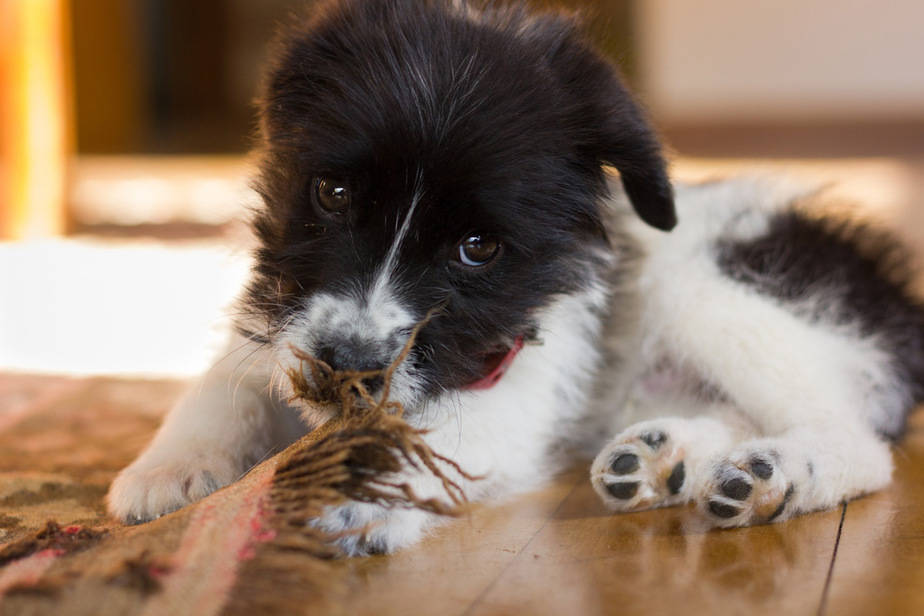
Methods of disciplining a puppy
Disciplining a young puppy often involves a lot of management, coupled with setting your puppy up for success, so you can avoid any negative effects associated with harsh punishments.
There are a variety of useful management solutions that you can (and should) utilize to keep your puppy out of trouble.
Crate or Pen
First, you should have a dedicated location your puppy can be when you aren’t able to watch them closely.
This location can be created by using a crate, tethering your puppy to a puppy-safe location, or creating a puppy playpen.
It’s important to teach your puppy to be happy and content on their own in this space, not only to prevent separation anxiety-related problems, but to give your puppy a safe place.
You can give your puppy a frozen Kong, feed them their meals in this location, and ensure it’s comfortable and cozy to their liking.
For my fluffy dogs, that means they prefer their crate to not have a giant bed, because they get too hot when they can’t lay on the cooler plastic flooring.
Puppy Time-Out
Time-outs can also be a kind, yet effective, method of punishing a puppy.
You can utilize your puppy’s space when they are biting and nipping at your hands, or when they are in a mood that says they should chew every piece of furniture they can get their teeth around.
Not only will removing your puppy from the situation help teach them that it isn’t acceptable behavior that is allowed to continue, but a bitey puppy is often a tired puppy that needs a nap.
Putting them in a smaller space where they can relax on their own can help encourage your puppy to take a much-needed rest. Most puppies should be resting for upwards of 20 hours a day!
When should you discipline a puppy?
In general, if you find yourself wanting to discipline your puppy, consider that you actually likely need to keep a better eye on your puppy, or spend more time training your puppy on what you do want them to do.
However, a few situations frequently arise where many owners feel they should be disciplining a puppy, so we’ll look at each situation individually.
If your finding your puppy is just generally out of control, then have a read of our post: Calm Down Your Crazy Puppy – Complete Guide.
Peeing and pooping in the house
Peeing and pooping in the house is one situation where you should NEVER punish your puppy. Not only is it a matter of training what you do want, but punishment is often ineffective.
Worse, punishing your puppy for peeing and pooping in the house often just teaches your puppy that you don’t like to see pee and poop, so they begin to hide from you to use the bathroom.
This can make potty training outside difficult if your dog is reluctant to go to the bathroom while on a leash with you.
It can also make house training difficult, because the accidents are harder to find, and may not be properly cleaned up.
I don’t know about you, but I’d much rather see my dog pee right in front of me where I can quickly clean it up than be searching my house for the source of the stale urine smell.
Instead, if you happen to see your puppy begin to have an accident right in front of you, try to use a positive interrupter (whoops! Let’s go outside!) and quickly pick up your puppy and take them to an appropriate location to use the bathroom.
You should also be offering your puppy frequent breaks outside, especially after playtime or meals, to try and give them the opportunity to use the bathroom outside without an accident first.
If you find pee or poop later on, there’s nothing left for you to do but note that you should’ve taken your puppy outside sooner, and clean it up with an enzymatic cleaner so it doesn’t smell like a bathroom place to your puppy.
You might like to also read our post Will My Puppy Ever Be Nice?
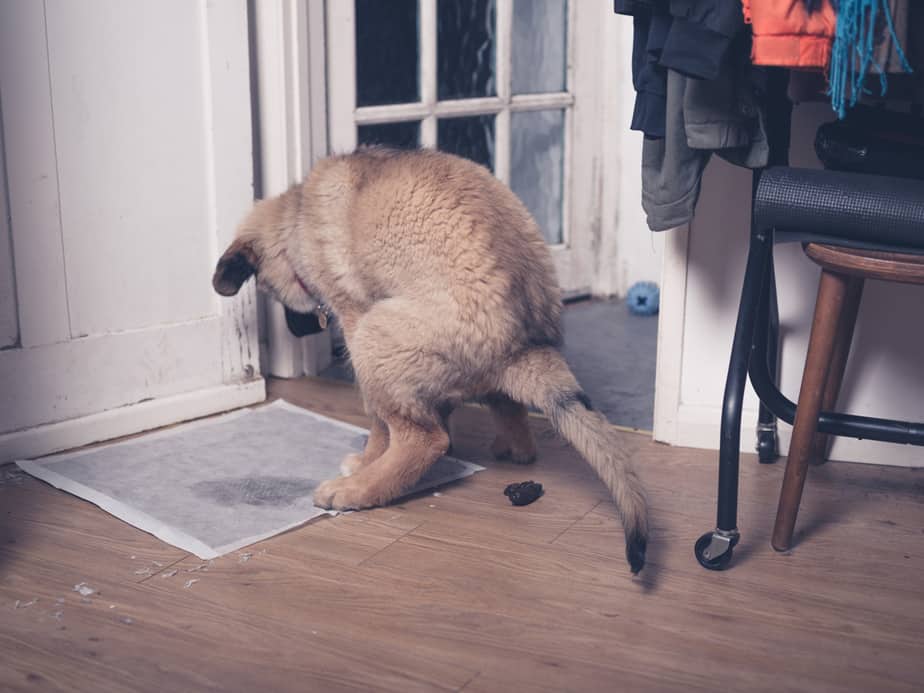
Ruining furniture
If your puppy is chewing furniture, it’s a sign that you need to either puppy-proof your home better, or keep a closer eye on your puppy.
If you can’t monitor your puppy, or prevent their access to furniture, you should place your puppy in their pen or crate instead.
In some cases, bitter apple spray can be used to make the furniture taste unpleasant. However, this shouldn’t be used as a first response.
Puppies need to chew on things – especially from about 4-6 months of age when they are teething.
Instead of punishing your puppy for this natural behavior, prevent their access and redirect them to a more appropriate chew toy instead.
Stealing food
Dogs are selfish, and young puppies are no exception. Dogs do what works for them, and if they want food and stealing it off of the counter works to get that food, why would they do anything differently?
Instead of punishing your dog for stealing food, which is a recipe to cause your dog to resource guard and can lead to aggressive behavior and bites, set your puppy up for success by not allowing them the opportunity to steal food.
You can do this by keeping food pushed back on your counters, and not leaving plates of food on tables unoccupied.
You can also teach your puppy an incompatible behavior, so they don’t learn to steal food.
An incompatible behavior could be as simple as teaching your pup to lay on their bed while you cook or eat.
If your puppy is busy staying in their designated location, they can’t also be stealing food from you.
Puppy Growling
You shouldn’t tell off or yell at your puppy if they growl. This is their way of saying I don’t like what you’re doing. You might be thinking, but I need to stop the aggression!
Actually, by scaring the growl out of them you take away their warning device. In the future, they may feel they have no choice but to go straight to a bite to show their dislike.
It’s best to give them space or remove them from the situation and putting them in a puppy time-out.
Puppy Aggression
True aggression in puppies is very rare, and is usually a misinterpretation of normal crazy puppy behavior, such as biting and mouthing. Watch for your puppy’s behavior and if you think they’re getting out of control, then it’s best to remove them from the situation or location, and take them somewhere quiet, such as their crate or bed.
For more information on puppy aggression, be sure to read our post: Puppy is Aggressive: Guide to an aggressive puppy.
How to discipline a puppy for biting?
Puppies bite. It’s a simple fact of owning a young puppy that you will need to deal with puppy biting. However, it’s important to note that puppies often bite for a reason, and dealing with the underlying reason is much more effective than punishing a puppy for biting.
First, you’ll want to try and figure out why your puppy is biting.
Are they overtired? Puppies should sleep at least 20 hours most days.
Are they teething? Puppies will lose their baby teeth and gain their adult teeth when they are around 4-6 months old.
Are they overstimulated? Puppies can get overwhelmed with new things and turn to a natural behavior, such as biting and chewing, for stress relief.
Once you know why your puppy may be biting you, it’s time to figure out a solution.
For puppies that are overtired, it’s time to put your puppy in their crate or pen for a nap.
For puppies that are teething, it’s time to give them a chew toy to soothe their mouths, such as a frozen Kong.
For puppies that are overwhelmed, it’s time to give them a break and some space.
In general, if you can’t redirect your puppy to a toy or another appropriate activity, it’s time for them to have a break and some alone time to either calm down or take a nap.
Can you discipline an 8-week-old puppy?
Puppies can definitely start to learn the rules and boundaries you set for them at 8-weeks old. In fact, puppies of this age are primed for learning and your expectations for your puppy should be clear from the time you bring them home!
An 8-week old puppy is just a baby, though, so it’s important to have realistic expectations. You’ll easily spend the first year or two of your dog’s life reinforcing the skills you want them to have before you’ll be able to consider your puppy to be trained.
There will also be many ups and downs along the way.
Discipline for an 8-week-old puppy should include things like time-outs, or utilizing baby gates and crates to manage their environment and set them up for success.
Your puppy has no idea what you want from them at only 8-weeks old, so redirection and guidance on the thing you do want them to do is critical, instead of punishing them when they do something “wrong.”
At what age can you discipline a puppy?
You should set clear boundaries and guidelines for your puppy from the day you bring them home, whether at 8-weeks or 8-months of age. However, these guidelines should be fair and kind, and you should teach your puppy what you expect of them.
Discipline should never be harsh, at any age.
Instead, focus on taking away opportunities to practice “bad” behavior, and teaching what you do want your puppy to do instead.
Remember that positive dog training is not permissive dog training, and you can certainly redirect your puppy to a more appropriate activity at any age.
However, harshly punishing a puppy is never a good idea. If your puppy is scared and worried, or in pain, your punishment is absolutely too harsh and you should revisit your training plan.
Is physical punishment OK?
Physically punishing a puppy (or an adult dog, for that matter) is never OK. If you find yourself in a situation where you are wanting to hit your puppy, or scruff them, or roll them and pin them to the ground, you need to take a big step back and re-evaluate the situation.
If you do ever feel like this, be sure to read our post, Puppy Rage: Losing Your Temper With Your Puppy.
Your puppy is only doing what they know how to do – they are not purposefully misbehaving or causing problems.
Thus, it’s unfair to physically punish your puppy for not knowing better – because you didn’t teach them better – not to mention the physical injury to you or your dog that you risk when physically punishing a puppy.
Puppies can certainly be frustrating, but physical punishment is not the answer.
Instead, put your puppy in their crate, take a moment to calm down, and contact a credentialled and professional dog trainer to help you with your problems in a positive manner.
Final Word
Your puppy wants to make you happy. However, the younger they are, the less they know about you and your boundaries. So it’s up to us as owners to show the way, and using positive methods of discipline is going to set your puppy up for a happy life. Which in turn will make you a happy dog owner!
Recall Training Secrets: How to Teach Your Dog Reliable Recall
Teaching a dog recall is not just a basic obedience skill; it's a vital aspect of ensuring the safety and freedom of your beloved pet. Picture this: your dog is playfully chasing after a squirrel [...]
The Joy of Petting: How to Approach Dogs the Right Way
"Can I pet that dog?" is often the first thought that pops into our minds when we see a furry friend wagging its tail. The joy of petting a dog is unmatched, offering both the [...]
Puppy Obedience: Where to Begin? An Introductory Guide
Puppy obedience is more than just teaching commands. It's about nurturing a relationship based on mutual respect and understanding. It lays the foundation for a well-behaved adult dog and ensures a harmonious life together. In [...]
Understanding Canine Autism: Do Dogs Experience It?
Have you ever wondered, can dogs have autism? Autism, a complex condition often characterized by social and communication difficulties, is widely recognized in humans. But when it comes to our canine companions, the idea of [...]
How to Integrate Play and Exercise for a Healthier Dog?
Ensuring a healthy and fulfilling life for our dogs involves more than just regular feedings and routine check-ups. Integrating play and exercise into their daily lives plays a crucial role in maintaining their physical and [...]
Outdoor Adventures: How to Make the Most of Outdoor Play with Your Dog?
Engaging in outdoor play with your dog is more than just a fun way to pass the time; it's an essential part of their health and happiness. From frolicking in the local park to embarking [...]

